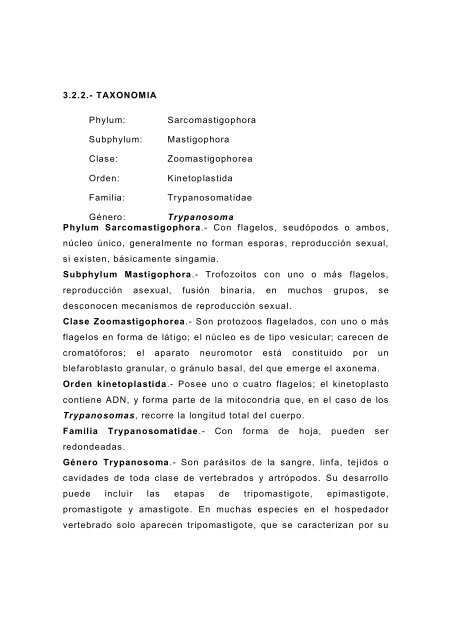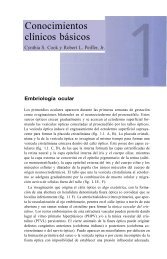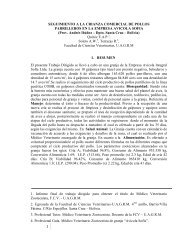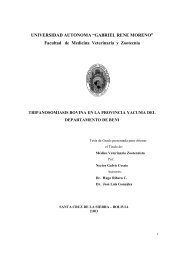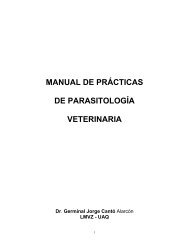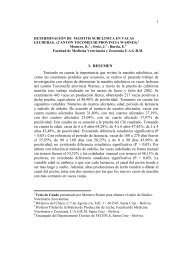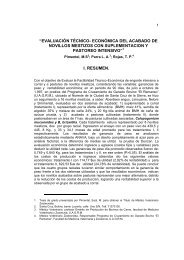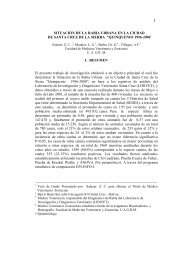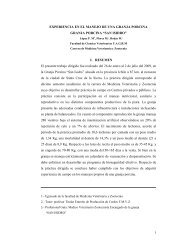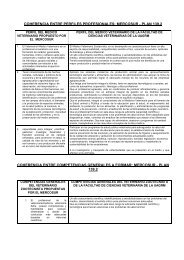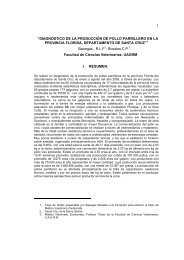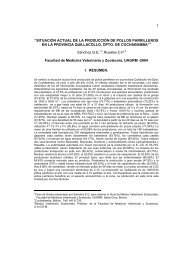landivar giovana-201.. - Facultad de Ciencias Veterinarias - UAGRM ...
landivar giovana-201.. - Facultad de Ciencias Veterinarias - UAGRM ...
landivar giovana-201.. - Facultad de Ciencias Veterinarias - UAGRM ...
You also want an ePaper? Increase the reach of your titles
YUMPU automatically turns print PDFs into web optimized ePapers that Google loves.
3.2.2.- TAXONOMIA<br />
Phylum: Sarcomastigophora<br />
Subphylum: Mastigophora<br />
Clase: Zoomastigophorea<br />
Or<strong>de</strong>n: Kinetoplastida<br />
Familia: Trypanosomatidae<br />
Género: Trypanosoma<br />
Phylum Sarcomastigophora.- Con flagelos, seudópodos o ambos,<br />
núcleo único, generalmente no forman esporas, reproducción sexual,<br />
si existen, básicamente singamia.<br />
Subphylum Mastigophora.- Trofozoitos con uno o más flagelos,<br />
reproducción asexual, fusión binaria, en muchos grupos, se<br />
<strong>de</strong>sconocen mecanismos <strong>de</strong> reproducción sexual.<br />
Clase Zoomastigophorea.- Son protozoos flagelados, con uno o más<br />
flagelos en forma <strong>de</strong> látigo; el núc leo es <strong>de</strong> tipo vesicular; carecen <strong>de</strong><br />
cromatóforos; el aparato neuromotor está constituido por un<br />
blefaroblasto granular, o gránulo basal, <strong>de</strong>l que emerge el axonema.<br />
Or<strong>de</strong>n kinetoplastida.- Posee uno o cuatro flagelos; el kinetoplasto<br />
contiene ADN, y forma parte <strong>de</strong> la mitocondria que, en el caso <strong>de</strong> los<br />
Trypanosomas, recorre la longitud total <strong>de</strong>l cuerpo.<br />
Familia Trypanosomatidae.- Con forma <strong>de</strong> hoja, pue<strong>de</strong>n ser<br />
redon<strong>de</strong>adas.<br />
Género Trypanosoma.- Son parásitos <strong>de</strong> la sangre, linfa, tejidos o<br />
cavida<strong>de</strong>s <strong>de</strong> toda clase <strong>de</strong> vertebrados y artrópodos. Su <strong>de</strong>sarrollo<br />
pue<strong>de</strong> incluir las etapas <strong>de</strong> tripomastigote, epimastigote,<br />
promastigote y amastigote. En muchas especies en el hospedador<br />
vertebrado solo aparecen tripomastigote, que se caracterizan por su


